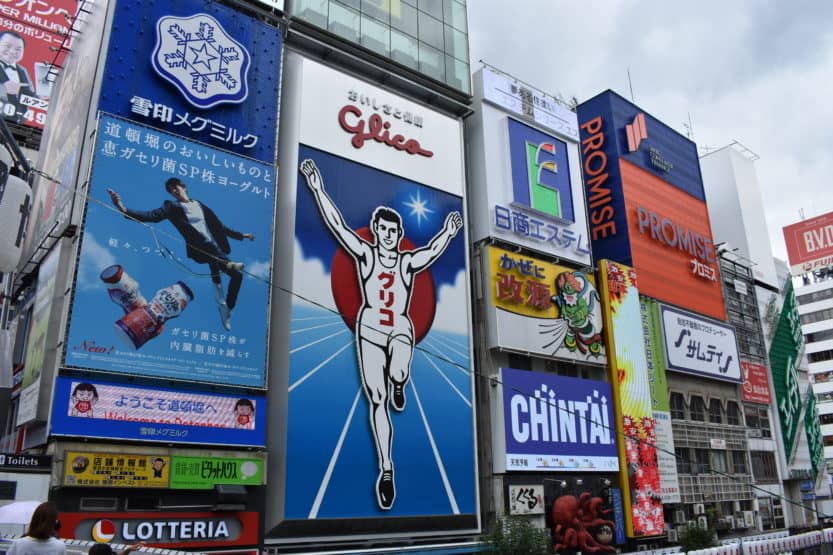
The first stop of our big Japan trip this summer was Osaka. With its population of nearly 2.8 million people and its reputation as one of the biggest foodie cities in Japan, it’s no surprise that it’s such a popular tourist destination. This is how we spent five days in and around Osaka.
Disclaimer: if you’re going to Osaka and you’re looking for a five-day itinerary, you might not be able to fully follow this one. It includes three day trips and some events that aren’t freely accessible to everyone. It should, however, get you a pretty good idea of the main things you need to do.
This is our five-day Osaka itinerary.
Click one of the links below if you’re only interested in a specific part of this itinerary!
- Walking around the city
- Trying Japanese candy
- Eating a mystery dinner
Day 2: Dotonbori (Osaka) & Bon Odori Festival
- How to take the train in Osaka
- Namba & Dotonbori
- Lunch with a view
- Bon Odori Festival
- Hanging out with deer
- Visiting temples
- Getting to know the history and culture of Japan
Day 4: Hiroshima & Miyajima day trip
- Hiroshima Peace Memorial
- Atomic Bomb Dome
- Itsukushima Shrine
- Arashiyama bamboo grove
- Fushimi Inari Shrine
- Okonomiyaki
- Geisha neighbourhood
You can also check out the map below for every specific location mentioned in this blog post.
Day one: settling in in Osaka
Our flight from Brussels Airport departed at 10 am. We had one short layover in Frankfurt, where we arrived at 11:15 am. After another flight – my first ever long-haul flight, by the way – we arrived in Osaka at 8 am.
Before you ask: yes, I felt jet-lagged, but it wasn’t nearly as bad as I had expected.
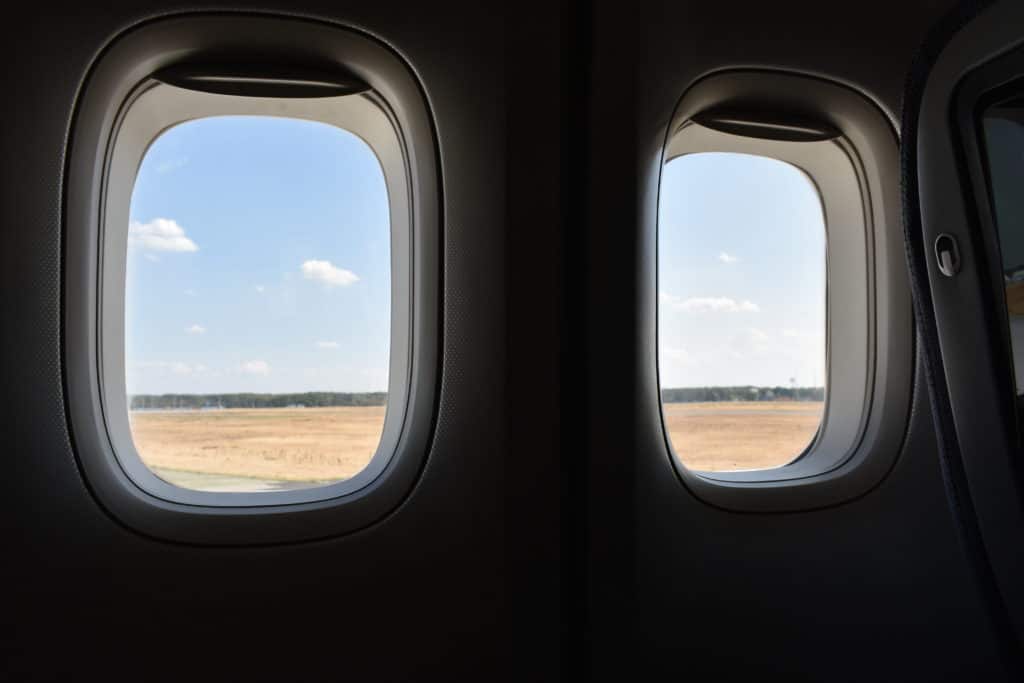
After my dad picked up the mobile WiFi device he had ordered beforehand, we boarded a bus that took us to one of the main bus stations of Osaka. From there, we had a short (but exhausting) walk ahead of us.
I assure you, I’d rather walk for an hour in decent conditions than do that fifteen-minute walk again. Just saying.
We eventually made it to our Airbnb around 1 pm, but we weren’t officially allowed inside until 3. Luckily, a lady was cleaning the apartment and let us in to drop our bags before we set out to explore the city.
New to Airbnb? Get $35/€30 off your first booking through this link!
One of the first things we saw (mainly because it was right around the corner from where we were staying) was an indoor shopping arcade called Tenjinbashi-suji. Of course, we had no idea what it was called at the time, but I found out afterwards.
This arcade featured quaint side streets, boutique shops, small cafés and pachinko and slot machine establishments.
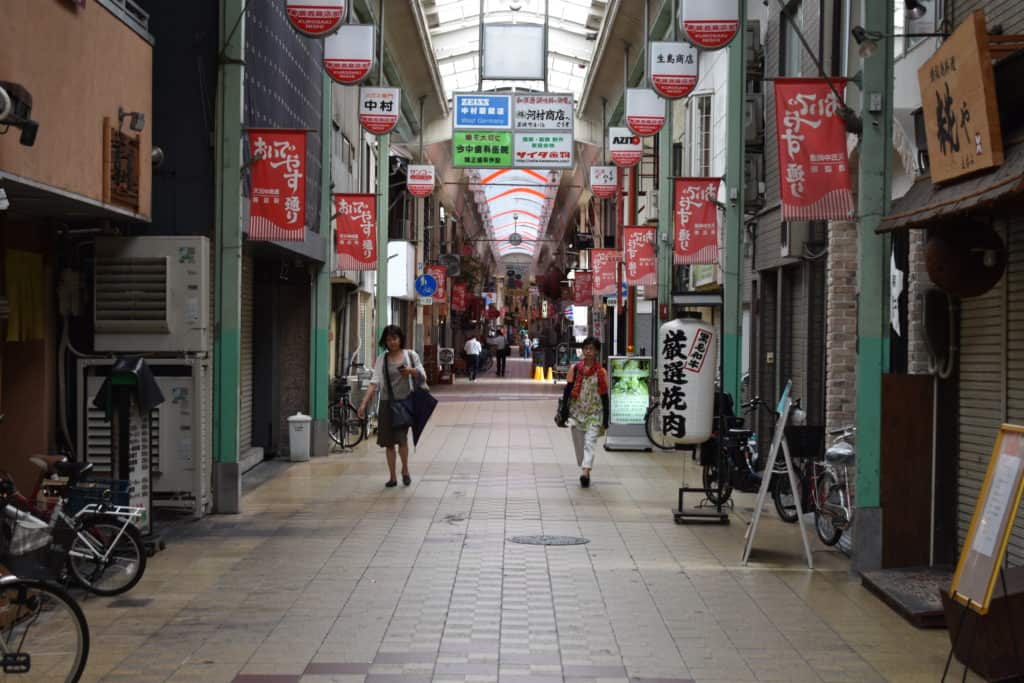
Fun fact about pachinko: it’s the Japanese response to western slot machines and a nifty way around the government’s ban on gambling for cash. Also, the pachinko market in Japan generates more gambling revenue than Las Vegas, Macau and Singapore combined. Madness.
Walking around Osaka
Anyway. Around 3 pm, we decided to try to find unique flavours of candy in a convenience store near our Airbnb. As in most convenience stores around the world, I assume, there was an entire section dedicated to candy and cookies. However, the exciting part in Osaka is that – assuming you don’t speak Japanese – you have nothing to go off except the illustrations on the packaging.
We picked up some candy and sweets and headed back to the Airbnb to dump our stuff and freshen up before heading back to the city.
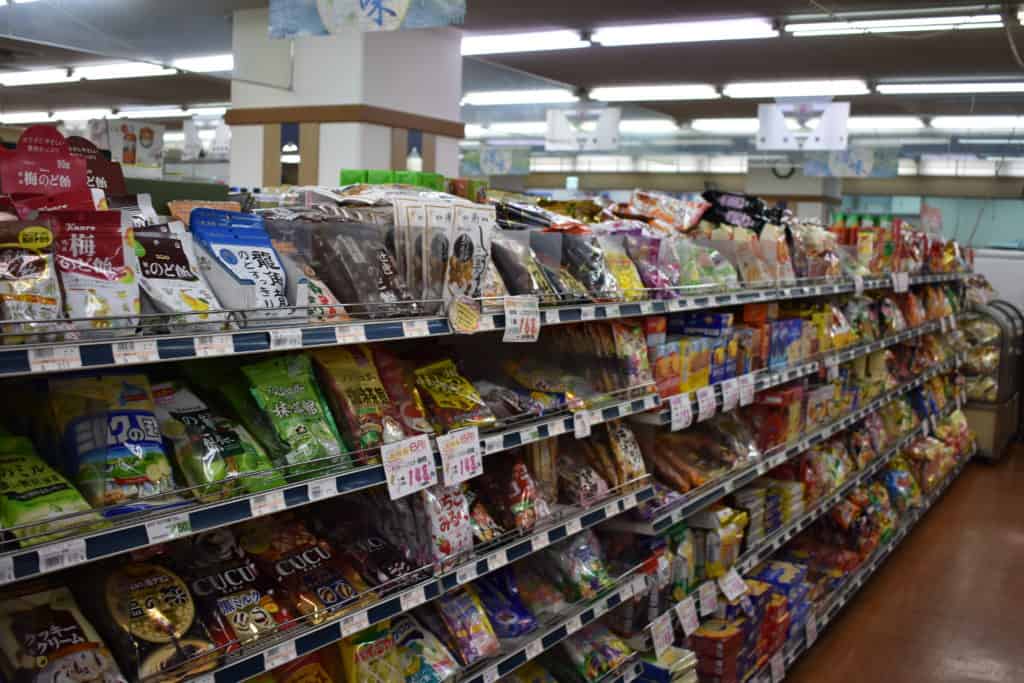
After spending some time at the apartment to unwind, we went back to the city to explore some more. We found a business card at our Airbnb promoting a nearby coffee shop called Haiku Coffee, so we decided to go there.
I wasn’t able to find a website, but they do have a Facebook page and you can find their contact information by just Googling “Haiku Coffee Osaka” (or just click this link).
When we entered the coffee bar we saw that there was only one big table in the middle of the establishment and we were the only guests. The waiter was very kind and tried his very best to tell us some stories in English. The coffee was freshly made and tasted great.
Now that we got our coffee fix, we walked around some more and really took in the atmosphere of Osaka.
My parents then went back to the apartment and my sister and I set out to take some pictures to keep our Instagram followers happy. Afterwards, we went back to the apartment as well and then we all went out for dinner together.
Dinner with Google Translate
Earlier, as we were walking through Tenjinbashi-suji, we had noticed a small restaurant on one of the corners. It looked very secretive and it was hidden away behind bamboo sliding doors.
The first time we walked past, the doors were open and there was a man (we would later find out he was one of the cooks) standing outside. My dad asked him if we could make a reservation for that night, and so we did.
Fast forward to 7 pm, when we had our first Japanese dinner experience.
As soon as we sat down at our table and got our menu, we realised that the chef didn’t speak any English. And neither did any of the waiters or other kitchen staff. On top of that, there are no pictures on the menu at all, so we have to resort to using Google Translate to let the chef know he can “surprise us” with anything. And he did.
The Japanese businessmen sitting at the bar, talking to the staff, were seemingly very amused at our struggle to order food.
We ended up getting an assortment of mostly raw fish, pickled vegetables and other foods that didn’t have the structure they were supposed to have. All in all, not a bad meal, but not the best.
One advantage of this experience is that I can now say I’ve had dinner in Japan where I mostly had no clue what I was eating. Two years ago, that would have been my worst nightmare. I’m definitely adding that to my mental ‘crazy travel experiences’ list.
Day two: Dotonbori and Bon Odori Festival
On day two, we had our first experience with the Japanese public transport system called Japan Rail. It was a very welcome change to the public transport system in Belgium, where trains and buses often run late or they don’t even arrive at all.
In Japan, everything is very well organised. Trains mostly come on time, and if they are delayed, that information is spread efficiently and quickly.
Although our experience with this Japanese system was very pleasant, it was still quite confusing. In order to make it easier for you to take the train in Osaka, here’s a concise guide.
A quick guide to taking the train in Osaka
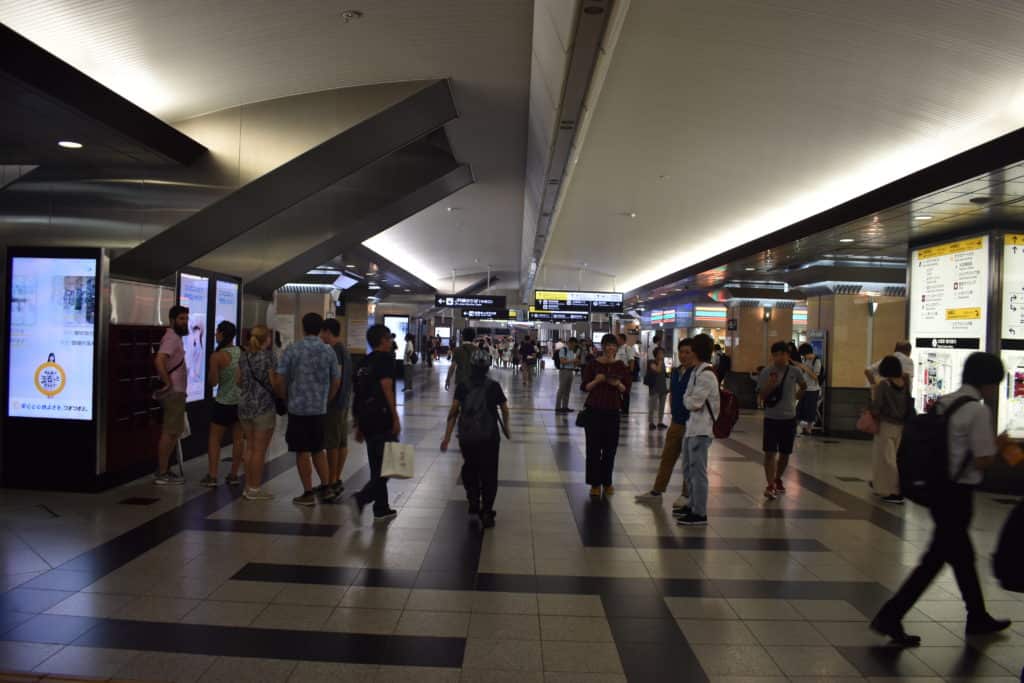
There are five categories of trains in Japan:
- Local trains: stop at every station
- Rapid trains: skip some stations
- Express trains: skip even more stations than rapid trains
- Limited express trains: only stop at the major stations on a train line
- Super express trains / Shinkansen: high-speed trains between major cities that use separate tracks
With the exception of the last category (Shinkansen trains), most JR lines offer all categories of trains. For example, if you’re going from Tokyo Station to Shinjuku Station, you can take a local train, a rapid train, an express train or a limited express train. This is one of the main reasons why you’ll probably never have to wait for a train for longer than ten minutes in Japan.
Information about Japanese trains is displayed both in Japanese and in English on information boards in the train stations, so you should have no problem locating your train.
As I covered in “Things You Should Know Before Visiting Japan“, I highly recommend that you get a JR Pass if you’re staying in Japan for seven days or more. You’ll probably be travelling around quite a bit, which means that train fares will definitely add up if you don’t have a JR Pass. It’s also important to know that you can’t buy a JR Pass in Japan, but you have to order it online before going to Japan.
Moving on
We had breakfast in the train station.
I know, it doesn’t sound glamorous at all, but it was actually very tasty. We found a small food store – I don’t want to call it a bakery because they weren’t, you know, baking anything – in the station. Everything looked delicious and the smells reminded me of going to a bakery on Sunday morning and immediately smelling the fresh buns that just came out of the oven.
We bought some fresh croissants and a whole assortment of other buns. While we were deciding which buns were going to give us a sugar rush that morning, my dad had gone to Starbucks to pick up some coffee to go with our breakfast.
Namba and Dotonbori
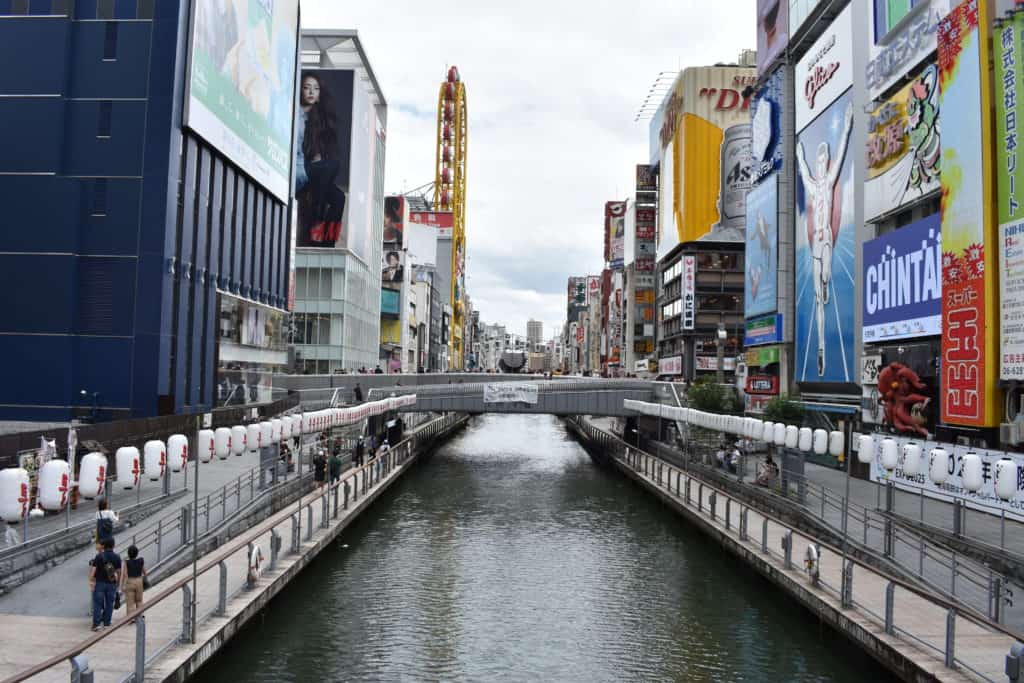
When I tell you that no Osaka itinerary would be complete without including Namba and Dotonbori, I’m not just exaggerating. You really do have to see the neon signs, the flocks of people and the flashing advertisement panels for yourself.
However, chances are that you have no idea what I’m talking about. In that case, allow me to introduce you to the pinnacle of modern Japanese culture.
Namba is one of the districts of Osaka’s Chūō ward, located very centrally within the city. Among locals, it’s known as one of the major entertainment districts of the city, as it’s home to many of Osaka’s most popular restaurants, bars, clubs and arcades.
Within Namba, the Dotonbori area is one of Japan’s major tourist attractions. So yes, there will be many tourists if you’re travelling during high season, but I strongly believe that it’s worth the visit and that the tourists even add to the experience.
You might have heard of the Glico Man. Well, you guessed it: you can find the Glico Man sign in Dotonbori. It’s the only sign in the area that hasn’t been changed since its original installation in 1935. The sign depicts an athlete on a blue track, who is meant to convince the world of the power of Glico candy.
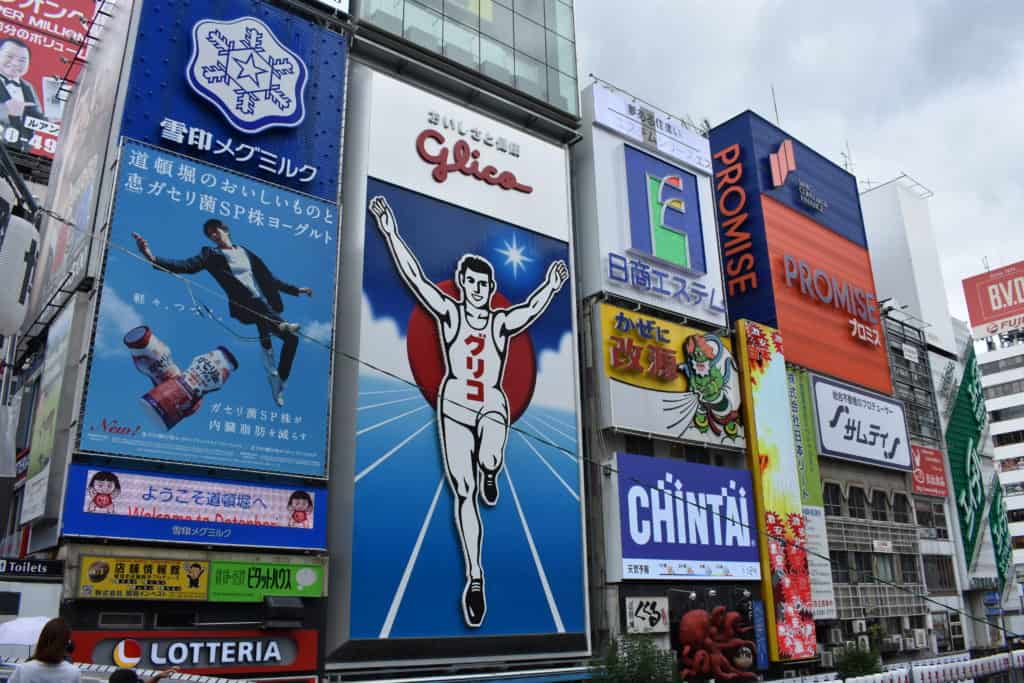
Lunch with a view
After spending the morning in awe of the busy streets of Namba and Dotonbori, we decided it was about time to get lunch.
Looking back on it now, this meal was probably one of the most wholesome, most impromptu decisions we made during our two weeks in Japan.
As you’ll soon come to learn, all major cities in Japan are filled to the brim with department stores. Some of the biggest and most famous chains are Loft, Mitsukoshi, Daimaru and Hankyu. These department stores usually have a basement floor (sometimes even two entire floors) that is entirely dedicated to food. They’re like big indoor food courts that still remind you of outdoor food markets when you’re walking through them.
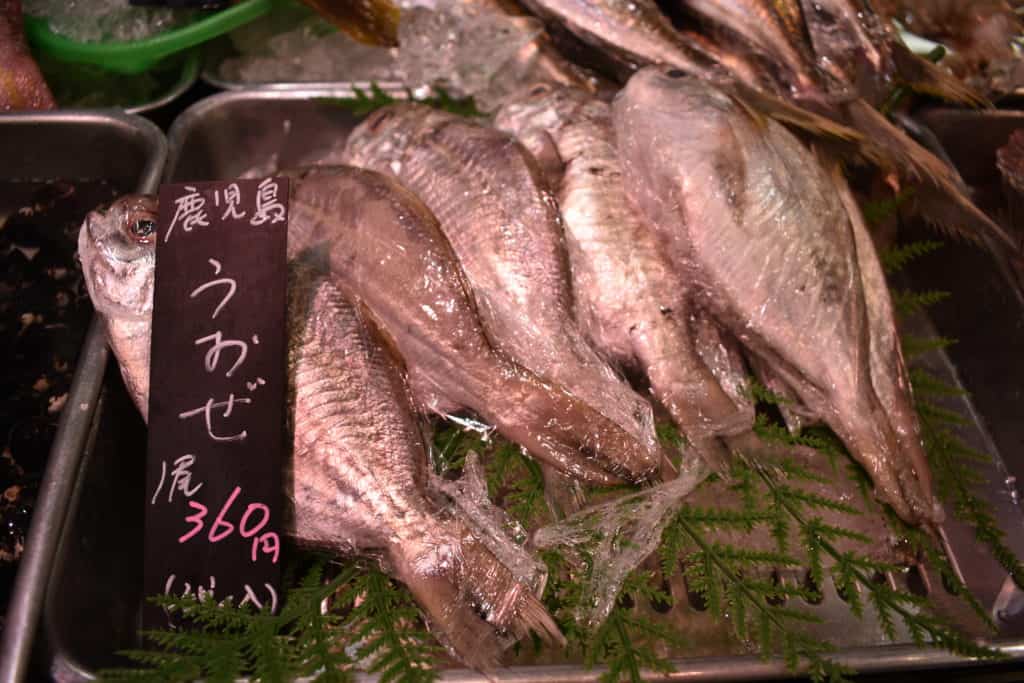
We went to one of the department stores in Osaka and we bought sushi, vegetable salads and raw meat. We took our bag, which was filled to the brim with delicious Japanese food, and we took the elevator up to the 14th floor, where we found a lunch garden rooftop terrace that was mostly empty.
And so, we sat down on the ground, opened up our boxes and we had lunch overlooking the Osaka skyline. Let me tell you: the food was great, the view was better and my company was the best.
Side note: I also got a kick-ass clip for my first Japan travel video! (The one right after the beat drops where my sister and I jump in the air, 1:47 in the video)
All stuffed up from lunch, we took the elevator back to the ground floor and returned to Namba. I filmed some footage for the travel video and we spent some time trying to find the perfect spot for the ‘Gram. After that, we returned to the Airbnb to freshen up before the big event of that day: the Bon Odori Festival.
The Bon Odori Festival
Now, if you’re reading this blog post to get an idea of what you can do during your stay in Osaka, it’s very unlikely that you’ll be able to follow along for this part. My apologies for that.
At this point, I’m about 90% sure that you’re thinking “But Sander, what is a Bon Odori Festival?”. To explain that, we have to go back to the meaning of Bon (or Obon).
Obon is an annual Buddhist event to commemorate one’s ancestors and honour their spirits. A Bon Odori Festival, literally translated as “Bon Dance Festival”, is an event that is entirely based around Obon. There are food stands where you can hear yakitori sizzling on the fire, stalls where you smell the garlic from fresh gyoza and many other food and drink related stands.
If you ever get lucky enough to experience Bon Odori Festival for yourself, I highly recommend you locate a food truck that sells kakigori. This is essentially just shaved ice and coloured syrup in a cup, but it’s so much fun to eat and it actually tastes like something other than ice. The main reason I like kakigori so much is probably that it reminds me of the kakigori I ate at the company Bon Odori Festival back in Belgium when I was a kid.
Other than the whole food truck situation, there’s usually a big square stage in the middle of the festival grounds. On this stage, people are singing and dancing, and when the time comes for the Bon Odori, people form circles around the stage and start dancing themselves. If you can’t imagine anything that looks like this, I put a short fragment of it in the video.
How we got the chance to experience Bon Odori
My dad works at a Japanese company. He has travelled to Japan for work a lot over the past few years, and when we decided to go to Japan on holiday, he quickly found out that there would be a Bon Odori Festival organised by the company on our second day there.
Side note: companies aren’t usually the ones who organise these festivals. The company my dad works at does it every year and they make the new employees help in the organisation. Also, new employees are responsible for the entertainment, which means that they were dancing on the stage for the majority of the night. You can also see this in my travel video (and it’s one of my favourite shots in there!)
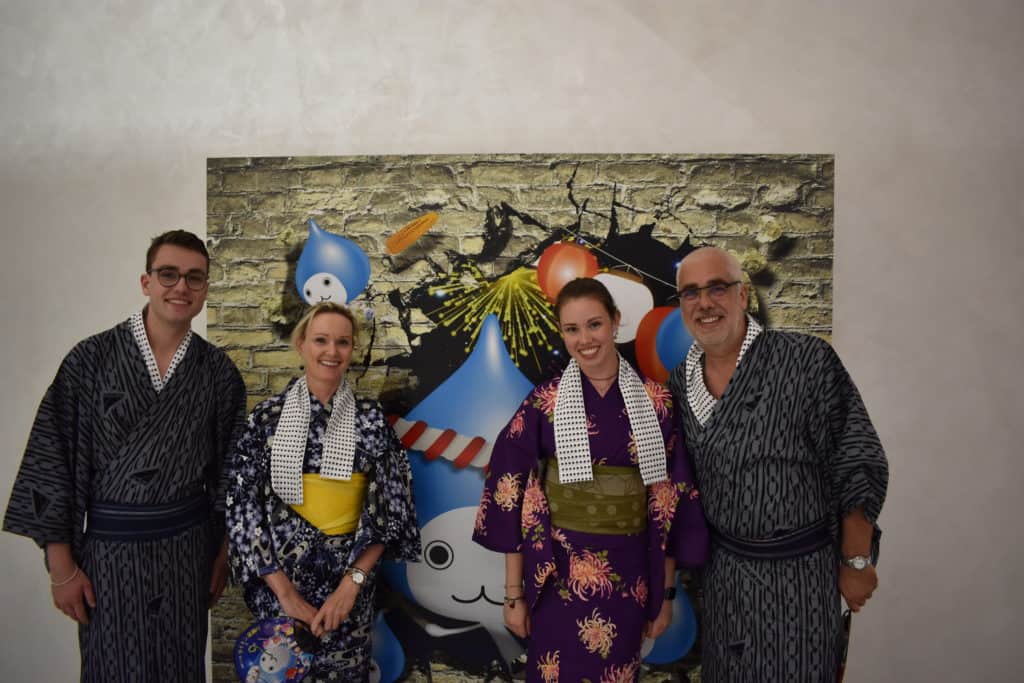
Once we realised that we were going to this festival, my dad arranged for us to get traditional Japanese clothing so that we wouldn’t stand out against all the Japanese people in our regular jeans and t-shirt. This festival was surreal to experience as a westerner and I’m very thankful to my dad for giving us this opportunity.
Day three: Nara day trip
On day three, it’s about time for you to get out of the city and take a day trip to Nara. Again, no Osaka itinerary would be complete without mentioning the beautiful city of Nara, which was Japan’s first capital city back in the eighth century.
Music tip: listen to Arrival in Nara by alt-J while planning this day trip. It’s ridiculously good.
The main thing Nara is famous for is the deer which roam around freely through the crowds of awe-struck tourists. You might have heard that they walk around the city, but that’s not true. The deer mostly stay within Nara Park. Not to worry, though: this is still an enormous park and you won’t even be able to see all of it.
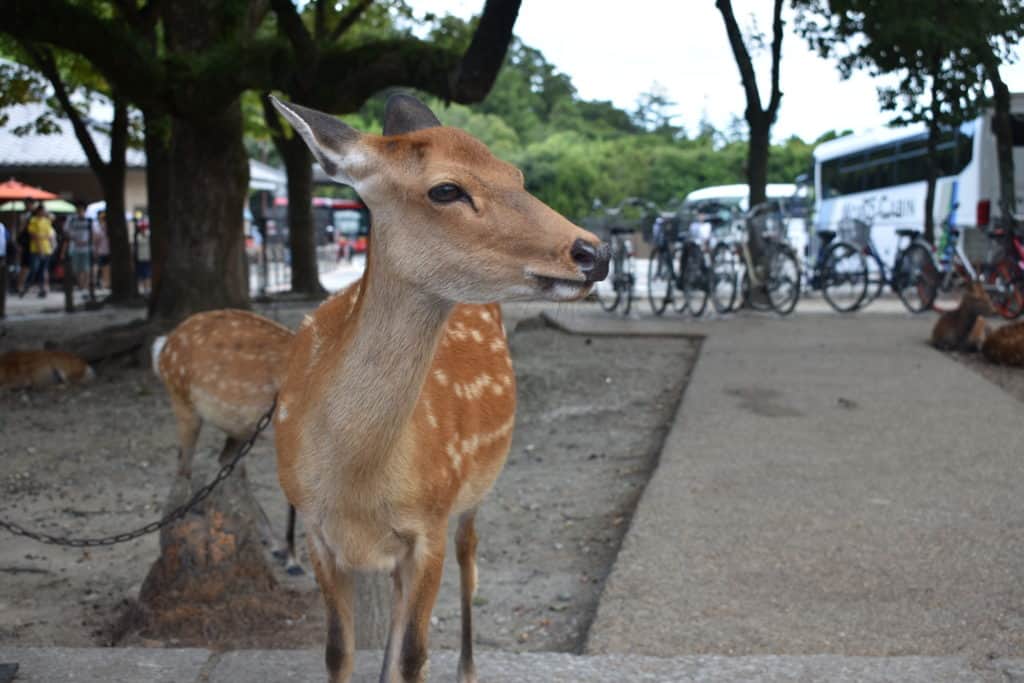
Relaxing in Nara Park
At the entrance of the park, you might feel like you’ve made a terrible mistake and you’ve fallen for a tourist trap. That’s to say, there are a LOT of tourists here. But many of them don’t bother to wander deeper into the park after visiting the main temple, so you’ll probably have more deer to yourself if you do just that.
When we were in Nara, we had a local guiding us. As my dad works at a Japanese company, like I mentioned earlier, he used to have a boss who was born in Nara. This man’s name was Mr Egawa and he left the company a few years ago, but he gladly agreed to guide us around his hometown.
The first place you should visit after getting over the initial realisation that you’re sharing the pathway with thousands of wild deer is Todai-ji Temple. This temple is one of Japan’s most famous temples and it has great historic significance.
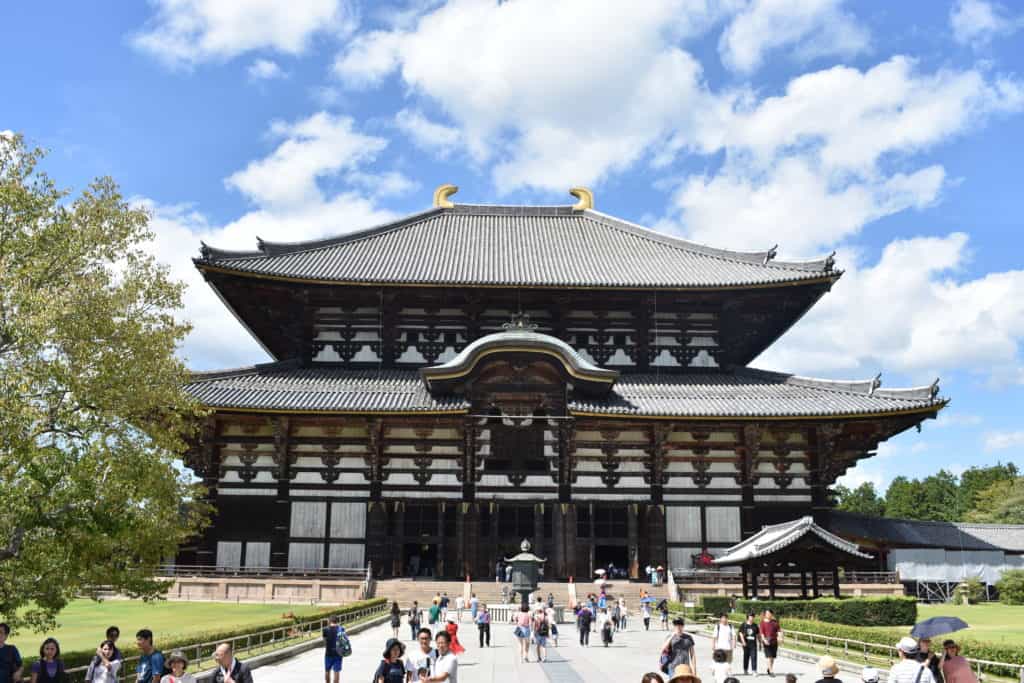
The name might not ring a bell, but what if I told you that this temple is home to one of the biggest Buddha statues of Japan? And what if I told you that the temple is the biggest wooden building in Japan? You’d deem it worth a visit, right?
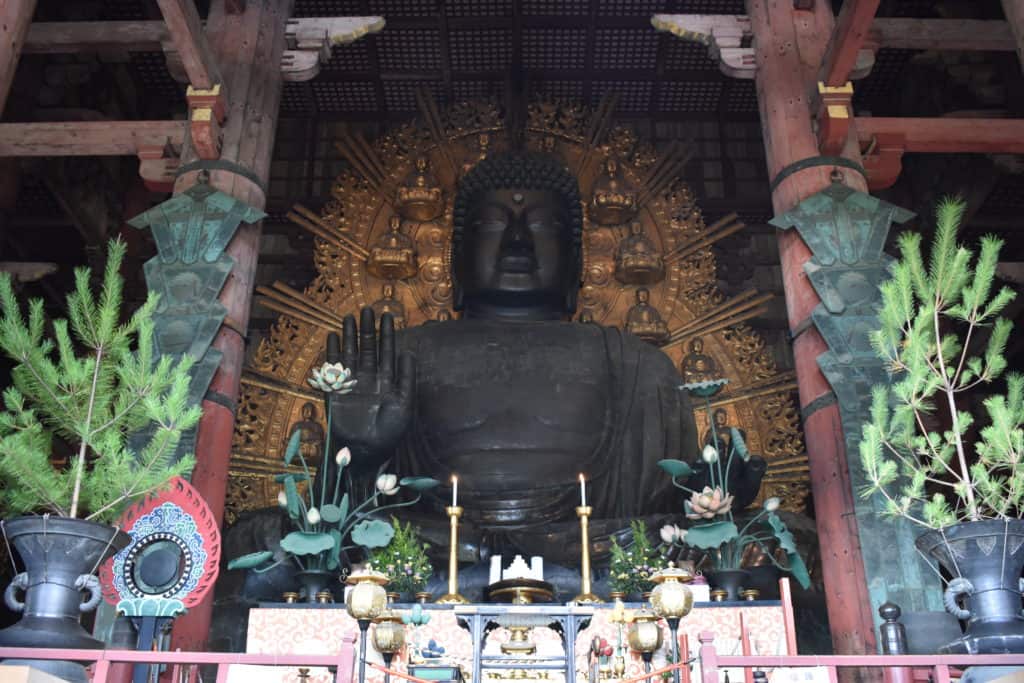
After gazing at the immense statue of Buddha and walking around the temple, cautious not to fall for any palm reading or fate prediction scams, you’re going to walk along the path for a little while until you get to Nigatsudo Hall.
Nigatsudo Hall, Ukimido Pavilion and Nara by night
So, you’ve seen the main attractions of Nara park and you want to get away from the tourists and still see some amazing things. I’ve got just what you need: Nigatsudo Hall.
This hall is located at a four-minute walk from Todaiji Temple (and it’s actually a part of the Todaiji Temple complex), so you’ll get there in no time. Many other travellers don’t take the time to visit this place, because they really only want to see the huge Buddha statue. While that’s fine, you wouldn’t be reading this post if that’s all you were interested in.
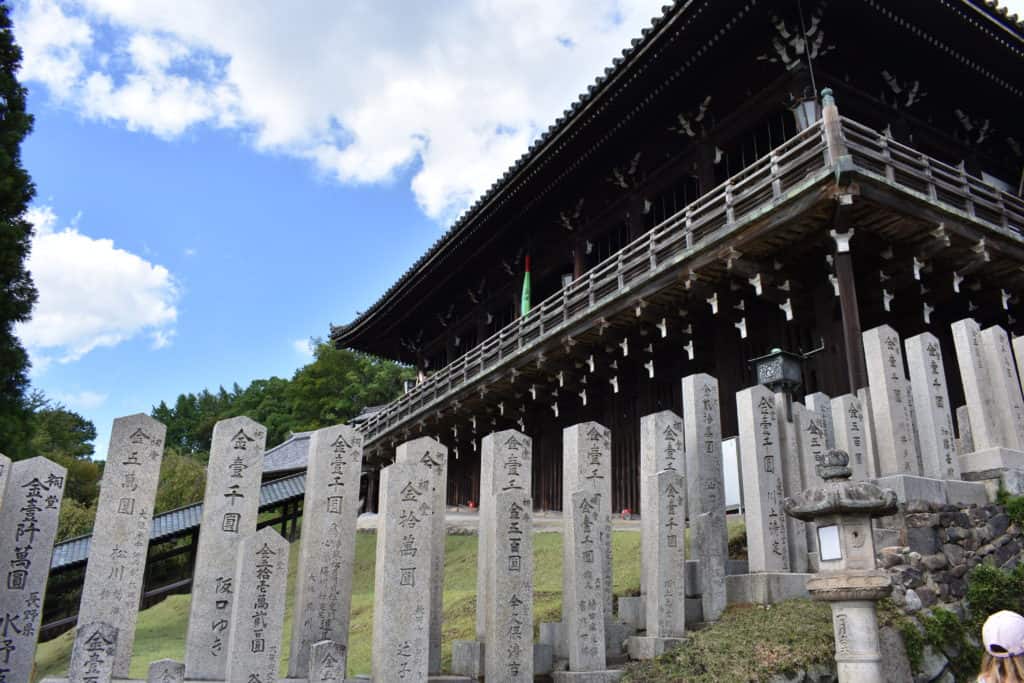
The pillars you can see in the picture above were constructed in honour and gratitude to people who made sizeable donations for the construction and upkeep of the temple complex. The smaller pillars were constructed for anyone who donated the equivalent of $1,000. Their big brothers can range anywhere from $1,000 to $100,000. Our Japanese friend told us that the symbols that are engraved in the stones are names of the families that donated.
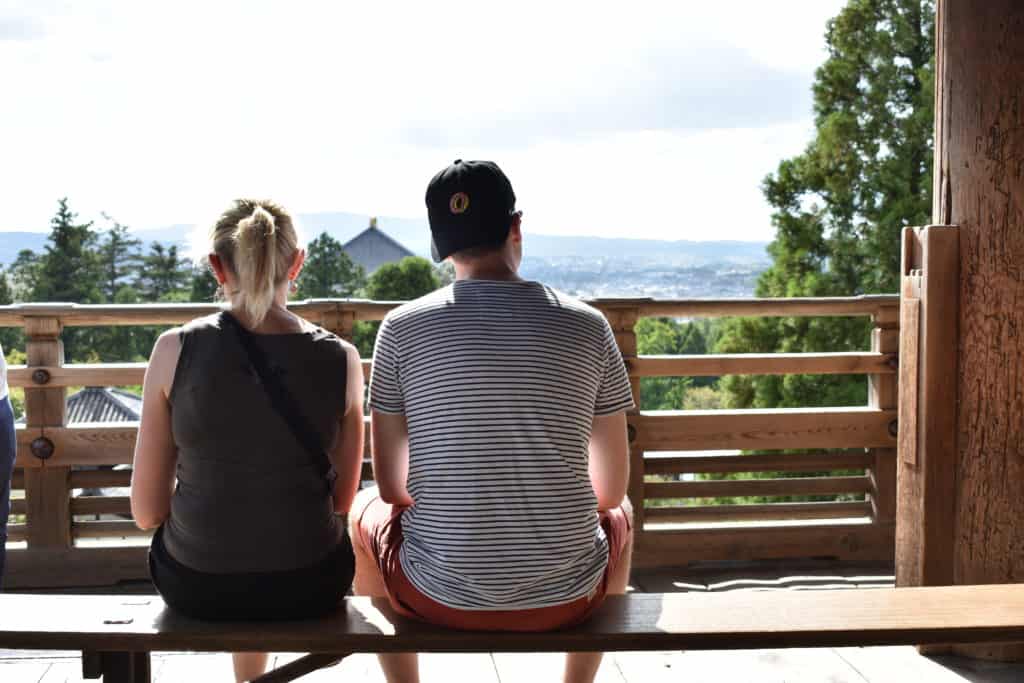
Bonus: if you do decide to go to this part of the temple complex, you’ll be able to take kick-ass pictures like the one above.
I also highly recommend that you wander around Nigatsudo Hall for a while. There are small paved pathways that make you feel like you’ve travelled back in time to imperial Japan, where you’re exploring an abandoned city.
Now it’s time to make your way to the other side of the park. By now, you’ve probably reached the late afternoon and you’ll want to rest somewhere idyllic. Boy, do I have the perfect location for you.
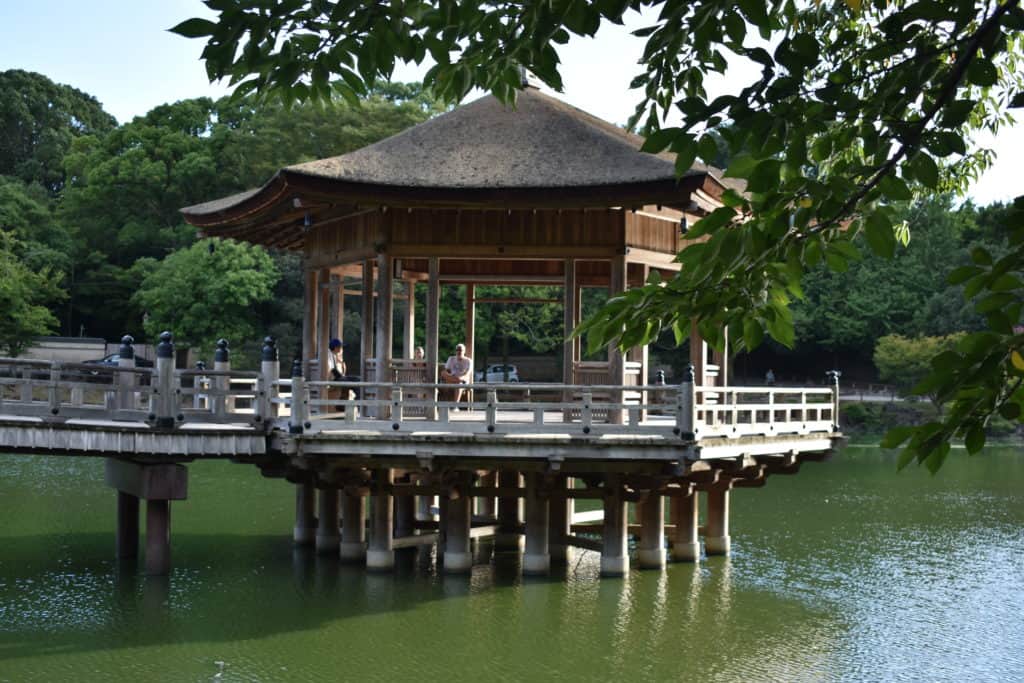
This little thing is called Ukimido Pavilion. It’s the perfect place to sit down for a while, catch a breath and listen to the sounds that nature produces. My sister and I also, you guessed it, walked around the pavilion in search of hidden Instagram spots. What do you know? We found them. I’ll let you discover them for yourself, though. Be sure to tag me on Instagram if you find them!
Back to the city: Nara by night
After discovering the fascinating hidden past of Japan, chilling with deer on a grass field and taking plenty of pictures, you’ll head back to the city of Nara for dinner.
We had a reservation at a restaurant just outside the city centre with Mr Egawa and his daughter Yuri. She spent a few years studying in Belgium (go figure!). As we were waiting for Yuri to arrive at the restaurant, we realised that it wouldn’t open until 6 pm. And that’s the story of how we ended up in a bar in Nara that used empty shopping carts as tables and empty barrels as chairs.
We all gulped down a refreshing drink and then made our way to the restaurant. The food was great, but I had the feeling that it was something like ‘Westernised Japanese food’. I’m not even sure whether or not that makes sense, but oh well.
After dinner, we really got to experience what it’s like to walk through Nara at night. Mr Egawa and Yuri took us to one of their favourite places in the city: a small lake that was located right in the city centre.
At that time of day, there were several lanterns that lighted up the area around the lake. People were unwinding and picnicking after a long day of working hard. The whole thing was kind of surreal: it was an extremely relaxing experience in a country that never seems to sleep.
Day four: Itsukushima Shrine and Hiroshima
Our fourth day in Osaka was another day trip. This time, we went to Itsukushima Shrine on Miyajima Island and Hiroshima. If you want to do the same, here’s how you should go about it.
How to get to Miyajima and Hiroshima
First off, you’re going to want to take the Tokaido-Sanyo Shinkansen train from Shin-Osaka Station to Hiroshima Station. There you’ll transfer to the San-Yo JR Line bound for Miyajimaguchi Station.
Again, I can’t stress enough how much I recommend getting a JR Pass. Especially if you’re going to do as many day trips as we did. A JR Pass will significantly cut your transport expenses in Japan. For your reference, a return trip to Hiroshima would set you back about 20,000 yen (equivalent of about €170 / £150 / $190). A 14-day JR Pass that gives you unlimited trains and Shinkansen rides would cost 46,000 yen (€360 / £320 / $410).
Anyway. You’re in Miyajimaguchi Station now. From here, you can take the ferry to Miyajima Island, which is where you’ll find Itsukushima Shrine. This ferry is covered by your JR Pass, but be careful to go through the JR entrance when boarding the ferry.
What to do on Miyajima Island
Starting off with what is probably the main reason you’re interested in Miyajima: Itsukushima Shrine. The huge Torii gate that seemingly floats on the water at high tide. At low tide, it’s possible to walk all the way to the foot of the Torii gate and admire it from up close.
I know, it’s tough to schedule your visit based on the weather and the tides. But if you arrive at the island at low tide and you have some spare time in your itinerary, I suggest that you stay until the shrine is fully in the water.
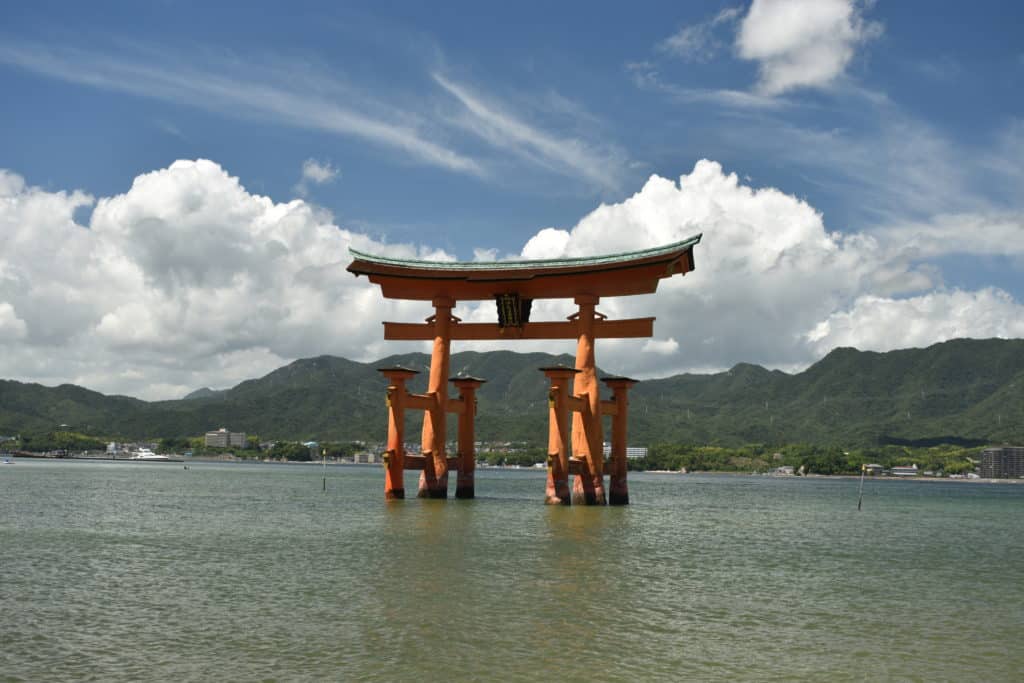
After spending some time marvelling at Itsukushima Shrine, you should make your way back to the ferry. On the way back, you’ll have a choice between a path along the water and a path that seems to go through some kind of village. Take the village route.
It’s definitely catered toward tourists, but it’s where you’ll find some deliciously prepared oysters. According to my dad, anyway. A bit further along the path, you’ll also find several food trucks that sell all kinds of grilled seafood. We tried the grilled octopus and it was delicious, although slightly chewy.
What to do in Hiroshima
Now, for the second part of this day trip. It’s time to go to Hiroshima. Get back to Miyajimaguchi Station and take the San-Yo JR Line back to Hiroshima Station.
For anyone who has any historical knowledge, Hiroshima won’t be another intelligible Japanese name. It will be the city where the first atomic bomb fell in 1945. In the aftermath of the bomb, nicknamed Little Boy, over 100,000 civilians died. That’s why every major tourist attraction in the city has something to do with remembering the lives that were lost in that attack.
The two memorials we visited were the Atomic Bomb Dome and the Peace Memorial Park.
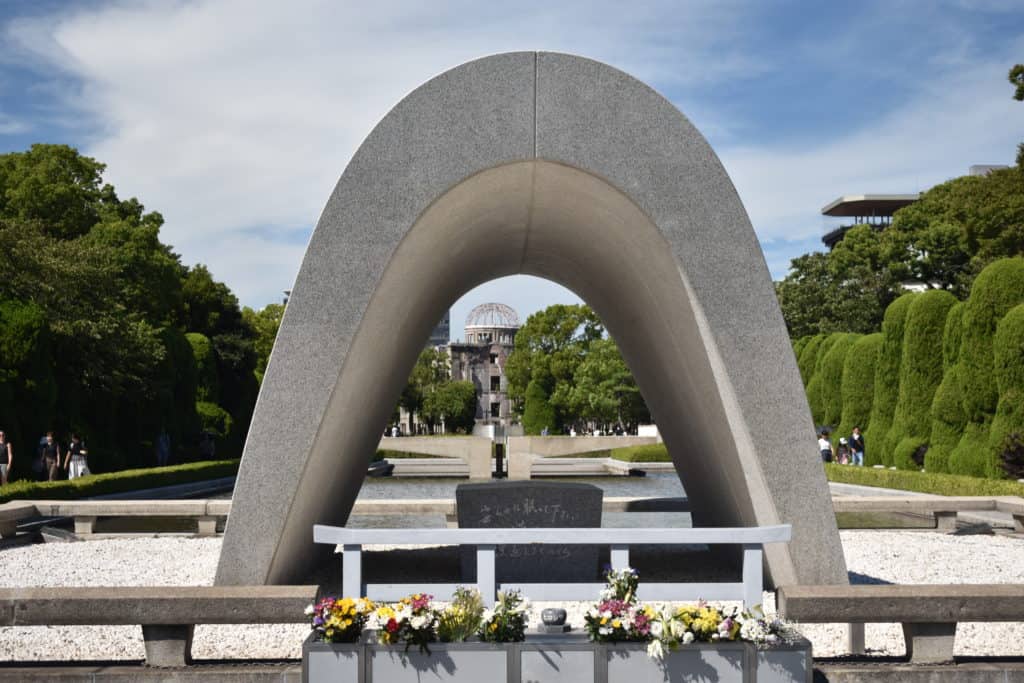
The Atomic Bomb Dome is the building where the bomb actually fell. This was the only building around the bomb’s hypocentre that was still standing after the bomb hit the city. It was registered as UNESCO World Heritage in 1996 as a symbol for peace.
The Peace Memorial Park is the main park of Hiroshima and it’s home to the A-Bomb Dome and various other memorial sites, museums and monuments. Nowadays, it’s a nice park to take a stroll in.
Returning to Osaka
After spending a gloomy afternoon in Hiroshima, it’s time to take the Shinkansen back to the upbeat city of Osaka. More specifically, we’re going back to Namba, to check out what it looks like by night.
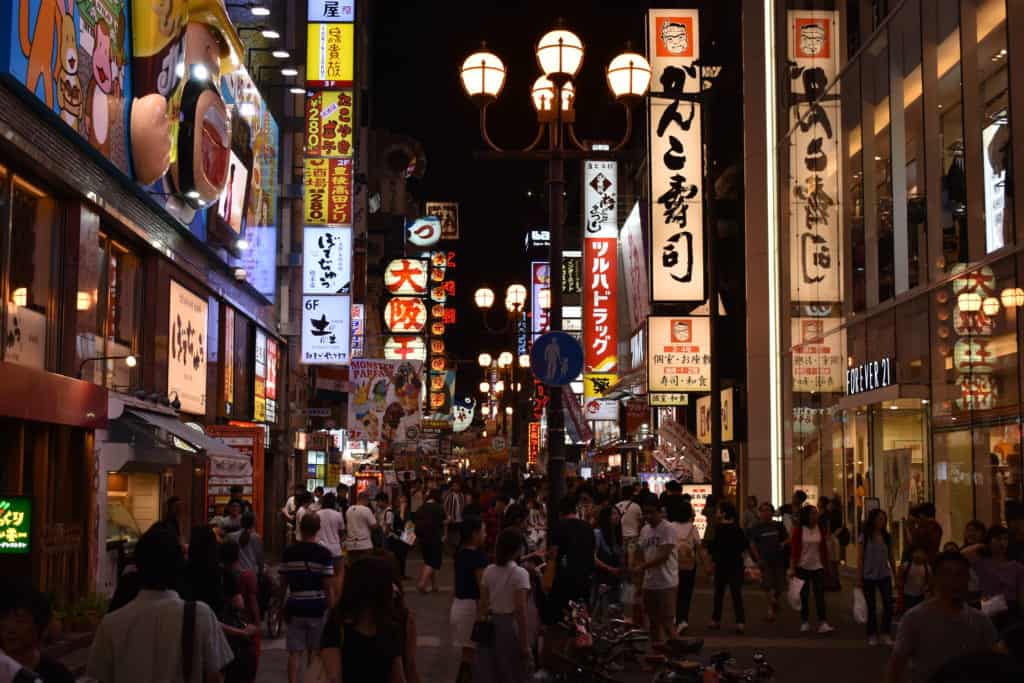
In our specific situation, my sister and my mom wanted to visit one of the clothing stores. My dad and I took that as an opportunity to bond over some cans of beer at the riverside. Three months later, that’s still one of my fondest memories of the whole trip.
When my sister and my mom came back from the store, we went to dinner. We opted for a small riverside restaurant that served tapas-like plates. It was a lot of fun and the food was delightful.
Day five: Kyoto day trip
Yes, another day trip. Deal with it.
How to get to Kyoto
There are a few options that will take you from Osaka to Kyoto.
The fastest (and most expensive) option is the JR Shinkansen from Shin-Osaka Station to Kyoto Station. However, I don’t recommend this option if you don’t have a JR Pass. It’s only 9 minutes faster and it costs twice as much. If you do have a JR Pass, however, go right ahead.
The other option is to take the Kyoto JR Line from Osaka Station or Shin-Osaka Station to Kyoto Station. Preferably, you’ll want to take a Special Rapid train, which will only stop at Osaka, Shin-Osaka, Takatsuki and Kyoto.
What to do in Kyoto
The first thing you’ll probably want to visit is the infamous Arashiyama Bamboo Grove. You know, the forest with the tall bamboo trees. Starting from Kyoto Station, it takes one more train ride to get there. Take the San-In JR Line bound for Sonobe and get off at Saga-Arashiyama Station. From there, it’s only a short walk away.
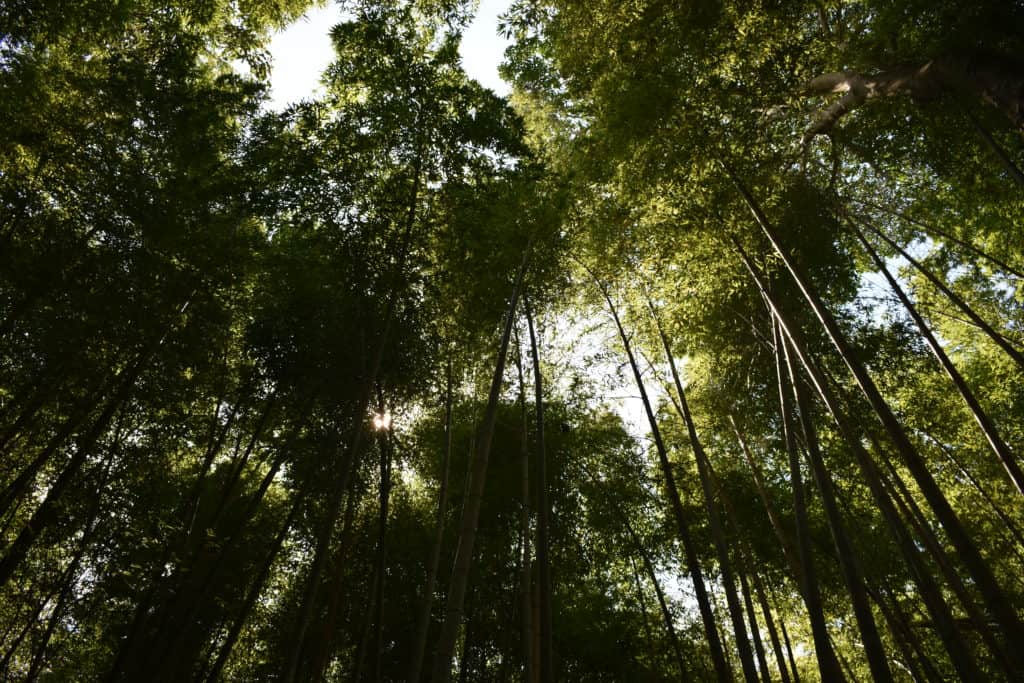
This forest is in a similar situation as Nara Park: it might seem like there are many tourists, but there are so many hidden corners (which are just as magnificent as the main pathway is) that you won’t have a problem finding them. Venturing off the beaten path has never been easier.
By the way, here’s a quick tip if you’re trying to get good pictures of yourself in the bamboo forest. Get the person who’s taking the picture to do it from a low perspective. That way, it’s much easier to make it seem like you’re the only person in the forest.
From Arashiyama Bamboo Grove, I recommend going to Fushimi Inari Shrine. This is one of the most famous and renowned monuments of Japan: a pathway through the mountain paved with thousands of red Torii gates.
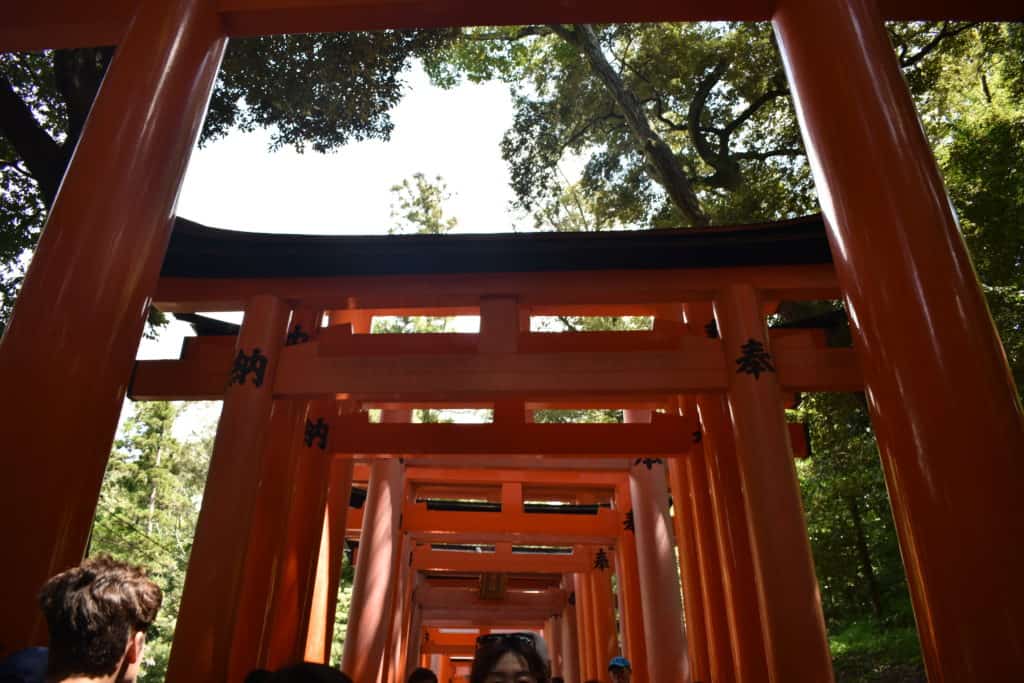
The best way to get there is to take the San-In JR Line from Saga-Arashiyama Station to Kyoto Station. There, you should transfer to the Nara JR Line to Inari Station.
Again, there will be a lot of tourists here. And again, the further along the path you go, the fewer tourists will be there with you. On the trail toward the Fushimi Inari Shrine, there are smaller shrines on the way to the top. After each shrine you pass, you will notice that a significant number of people give up. Those people decide to turn back instead of pursuing the hike to the top.
As a consequence, I recommend going as high up the mountain as you can. The entire hike to the top and back takes between 2 and 3 hours, depending on your speed.
Admission to the shrine complex is free and the complex is always open.
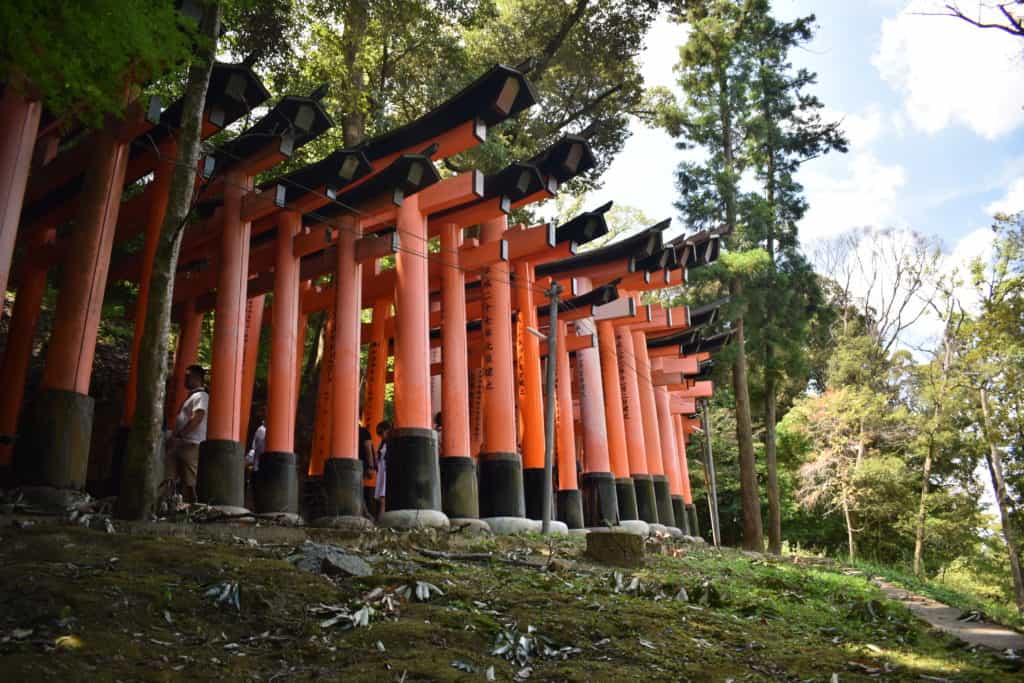
An afternoon in Kyoto
After taking a train from Osaka to Kyoto and visiting the Arashiyama Bamboo Grove and the Fushimi Inari Shrine, your morning has probably come to an end.
Now it’s time to find a restaurant for lunch. I highly recommend trying out okonomiyaki – a savoury pancake filled with a variety of ingredients – at one of these restaurants.
When you’re all lunched up and ready to go, head on over to Gion. This is the traditional Geisha neighbourhood of Kyoto. Admittedly, I had expected more of this, so I wouldn’t blame you if you skipped this and replaced it with another activity. I also won’t be able to give you directions to Gion, because that entirely depends on where you went for lunch. Just look it up on Google Maps and you’ll be golden.
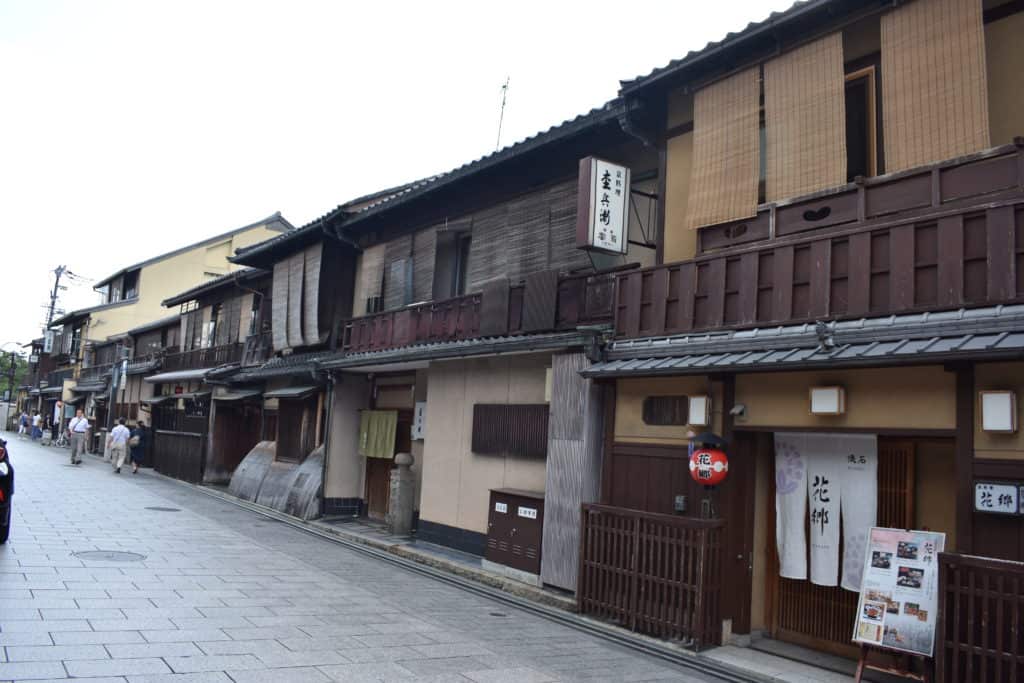
There’s a reason why I didn’t really enjoy Gion as much as I thought I would. It was very obviously aimed at foreign tourists. For example, if you see someone walking around in a yucata (traditional Japanese dress), there is no way to distinguish a genuine geisha from a tourist wearing a rental yucata.
If you are going to Gion, you might want to consider combining this visit with a leisurely stroll through Kyoto’s Higashiyama District. This district is one of Kyoto’s best preserved historic neighbourhoods.
Back to Osaka
By now, it’s about time to head back to Osaka, unwind a little and find a restaurant for dinner.
We had dinner with an Australian man named Michael who used to work with my dad. He now lives in Japan with his lovely Japanese wife and their two adorable daughters. It was very refreshing to have dinner with people who know the ins and outs of Japanese culture. Their stories about living and working in Japan fascinated me.
When this lovely get-together was over, we parted ways and my family and I headed back to the Airbnb for one last night in Osaka.
Conclusion and final thoughts on Osaka
As a reader of this blog post, chances are that you’re confused. You might think something along the lines of “How dare you call this an Osaka itinerary? You were barely even there!” and I’d have no choice but to agree with you.
We didn’t spend a lot of time in Osaka. The reason is that my dad had told me that there wasn’t really that much to do there. If you feel cheated now, I sincerely apologise.
However, the point of this blog post was to inform you about our first five days in Japan.
That being said, I would love to come back to Osaka and explore the city itself, since, you know, we didn’t really do that.
In any case, I want to finish this blog post by saying this. You’re a true warrior if you got through the whole thing. I appreciate it a lot.
Thanks for reading!
-S
PIN IT!
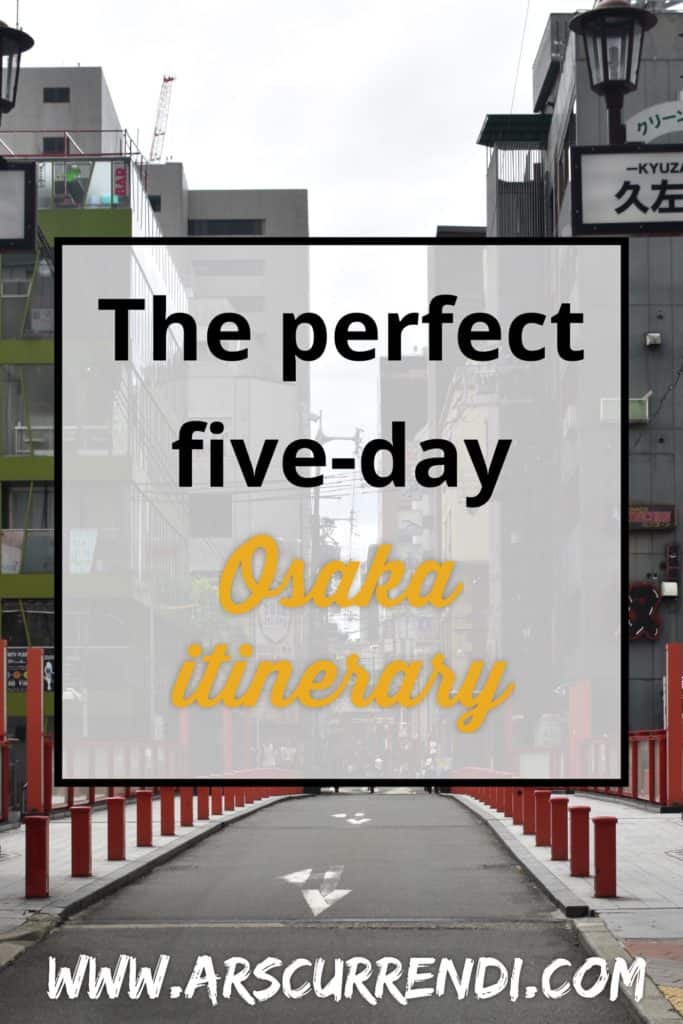

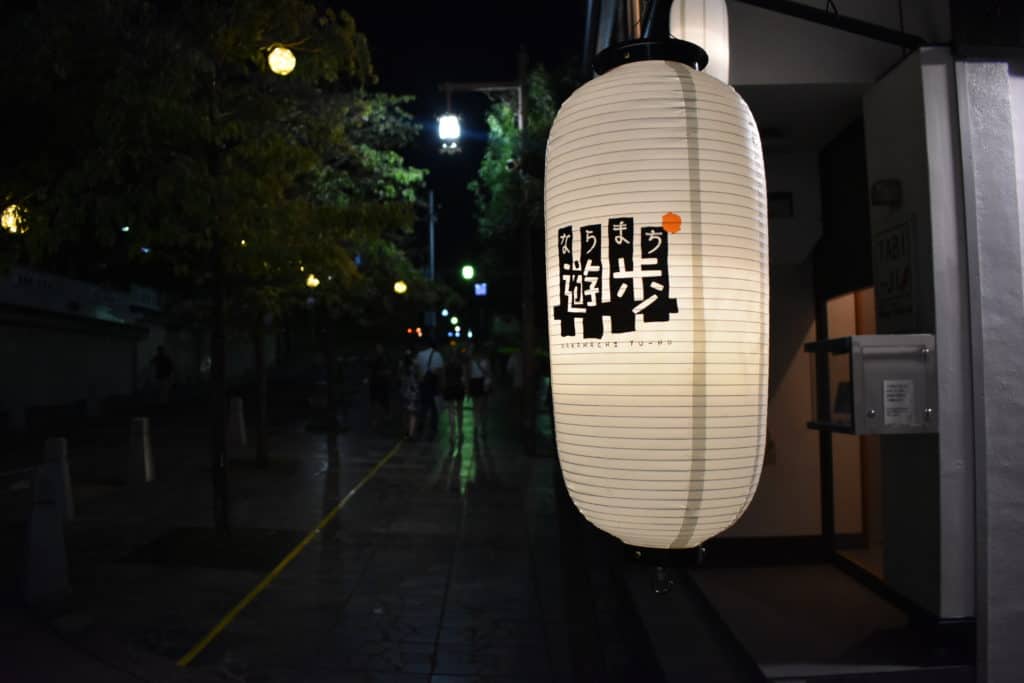
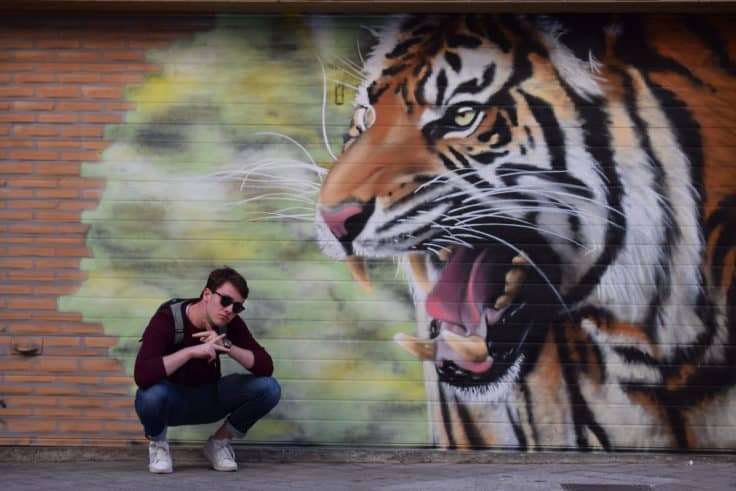

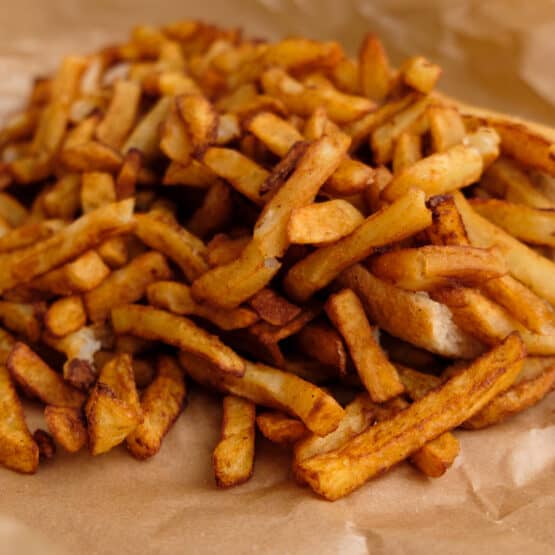
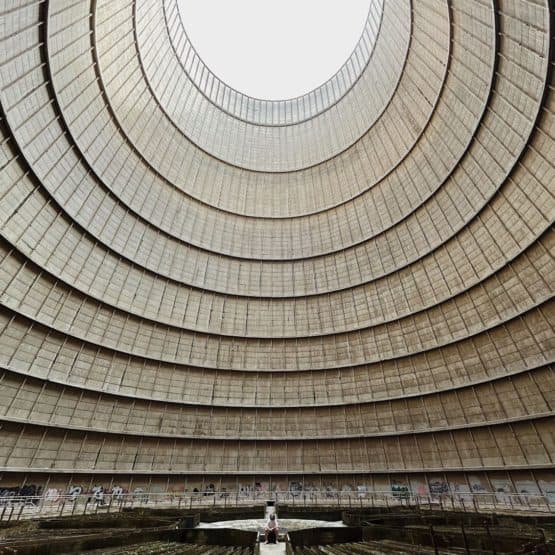
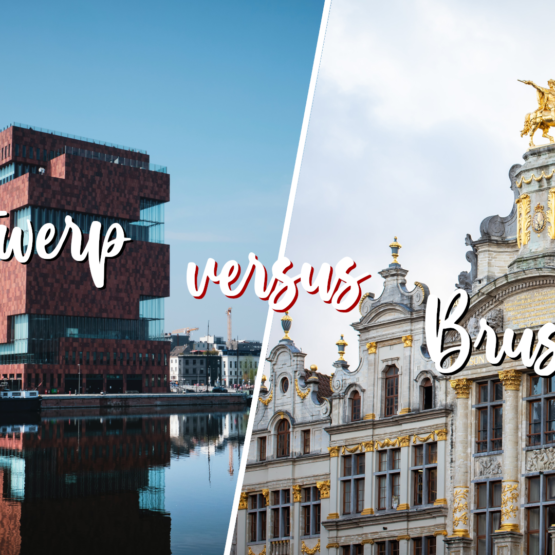
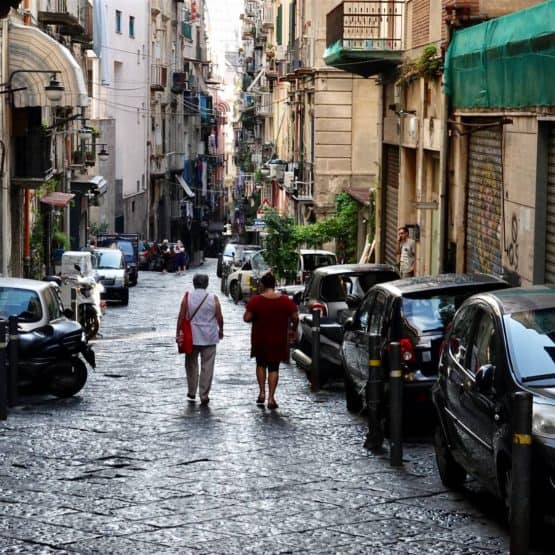
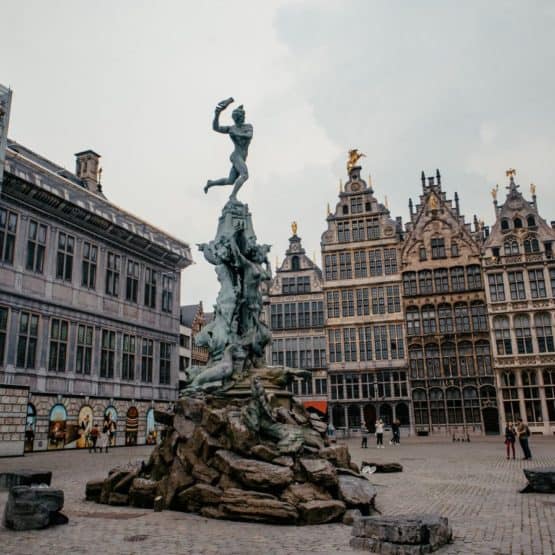
Crystal
October 29, 2018 at 4:53 amI’m not going to lie, I am totally a sucker for a tourist trap when it involves animals and I 100% want to go to Nara! I’d also really want to see the Torii gate in Miyajima both in high and low tide so I could feel special being able to touch something that is in the water most of the time (I love islands that are only accessible to during low tide for a similar reason!)
Sounds like a fantastic and fun filled five days! Japan is one of the countries I REALLY can’t wait to visit so it was nice reading about your travels!
Sander
October 29, 2018 at 9:48 amI’m glad this blog post has inspired you. Be sure to let me know when you go to Japan so I can follow along and relive my trip!
21 Luxury Travel Experiences Around the World
January 20, 2019 at 11:52 pm[…] After exploring Osaka for about 4 days and taking a day trip to Kyoto, we came back to the city. Of course, since my dad travelled to Japan for work often, he had some contacts there. And so, on that particular night, we went for dinner with an Australian colleague of my dad named Michael. We went to a Chinese restaurant at the Ritz-Carlton in Osaka. […]
Apolla Sy
September 28, 2019 at 8:05 pmi love how detailed you describe your trip. did you use the JR pass in all of your traveling? or did you buy some other card like the ICOCA card? can you use JR pass from the airport to downtown osaka like going to your airbnb?
Sander
September 30, 2019 at 2:37 pmThanks for your comment! We only used the JR Pass throughout our two weeks in Japan. As for the bus from the airport to the city centre, we took a bus (Airport Limousine Bus), which was not covered by the JR Pass (if I recall correctly).